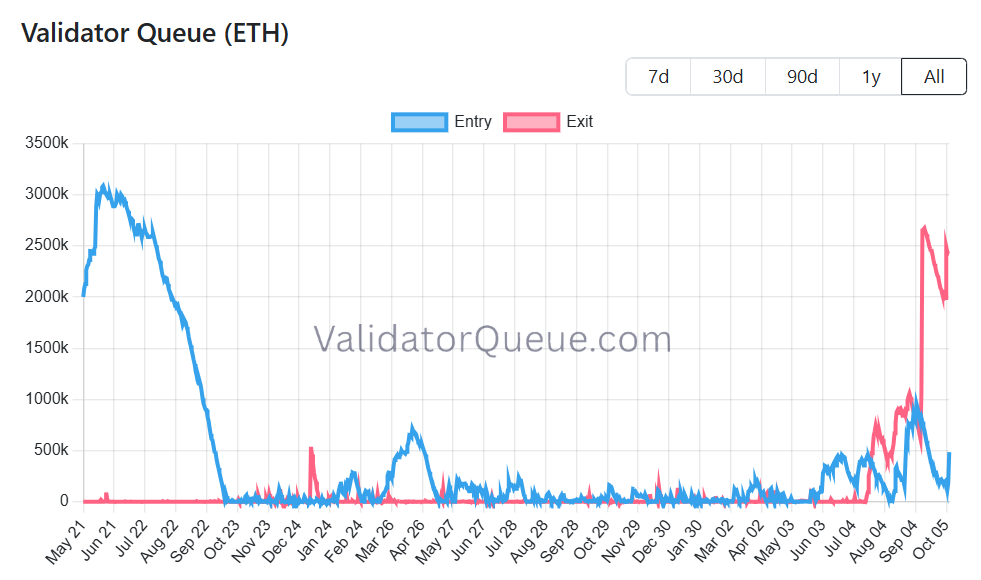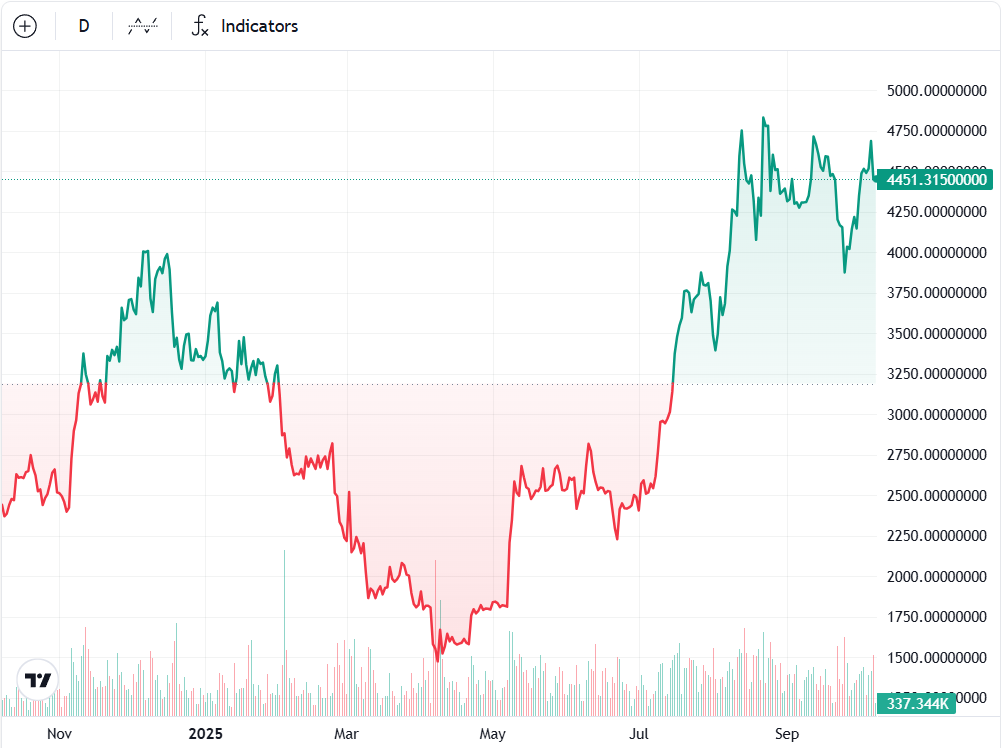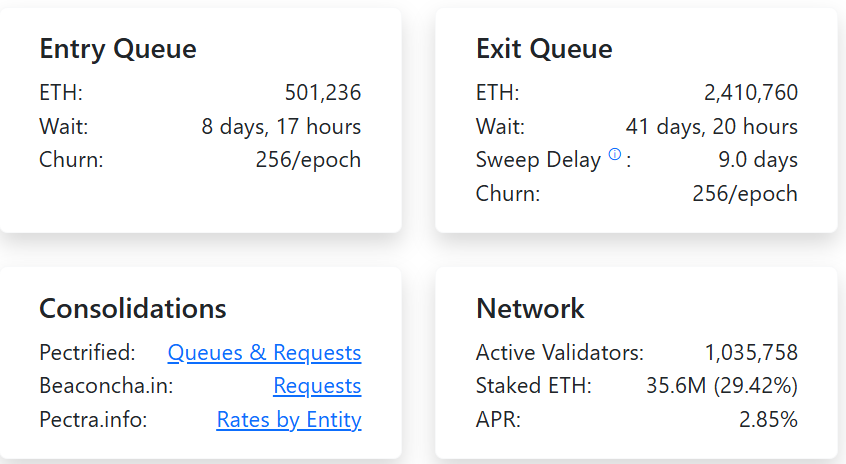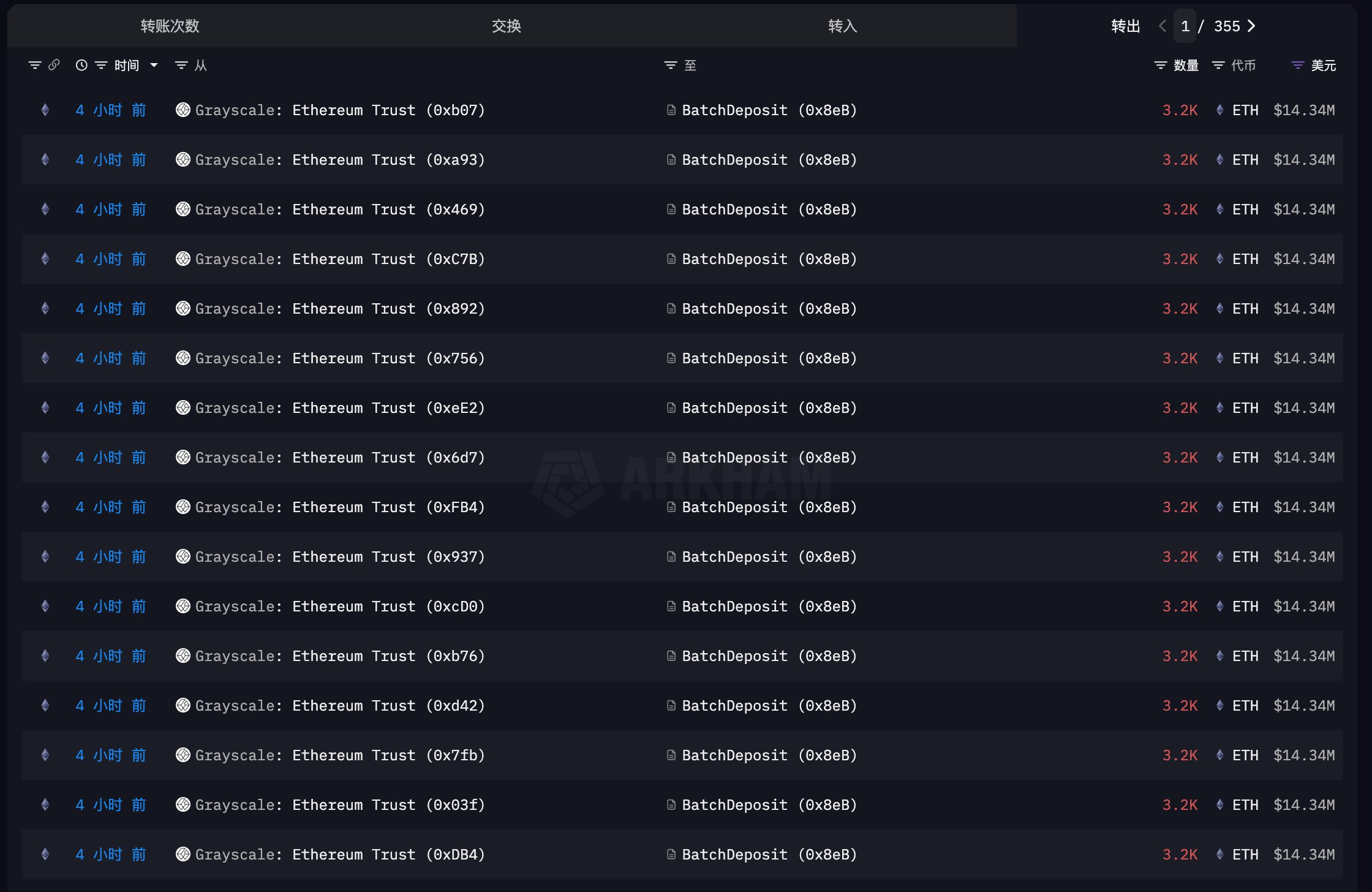The Ethereum validator exit queue has surged to more than 2.4 million ETH (over $10 billion), extending withdrawal wait times to ~41 days. Institutional staking — led by large managers depositing hundreds of thousands of ETH — is offsetting exits and easing short-term sell-pressure risks.
-
Exit queue size: 2.4M+ ETH (~$10B), ~41 days wait (ValidatorQueue.com)
-
Institutional inflows: Grayscale and funds have added 272,000 ETH (~$1.21B) to staking queues.
-
Network resilience: 1M+ active validators staking 35.6M ETH (29.4% supply); ETFs and corporate treasuries increase demand.
Ethereum exit queue surges to 2.4M ETH (~$10B); learn what it means for ETH holders and how institutions are responding — read our analysis.
Ethereum’s validator exit queue has surged to a record $10 billion, but institutional participants, such as Grayscale, are stepping in to replace the exodus.
Ethereum recorded its largest validator exit on record this week, with more than 2.4 million Ether worth over $10 billion awaiting withdrawal from its proof-of-stake network. Institutional participants are stepping in with significant deposits to the validator entry queue.
Ethereum’s exit queue surpassed 2.4 million Ether (ETH) — worth over $10 billion — on Wednesday. The spike in pending withdrawals pushed queue time to more than 41 days and 21 hours, according to blockchain data from ValidatorQueue.com.
Validators are responsible for proposing blocks and attesting to transactions on Ethereum’s proof‑of‑stake chain. Their exits and entries directly affect staking supply and short‑term liquid ETH availability.

What does a $10 billion Ethereum exit queue mean for ETH holders?
The Ethereum exit queue size signals potential near‑term sell pressure because large pending withdrawals increase available liquid ETH if validators choose to sell. However, institutional staking inflows and long‑term holder allocation reduce the immediate risk to network stability and price.
How are institutional deposits affecting validator dynamics?
Institutions have been active in the staking queue. Grayscale initially staked $150 million in Ether and then deposited an additional 272,000 ETH (~$1.21 billion) into the staking queue. Onchain analyst EmberCN reported Grayscale accounts for a majority of coins currently awaiting staking activation.
Those institutional deposits shorten net outflows by adding new stake, while ETFs and corporate treasuries increase demand for non‑circulating ETH. This dynamic helps offset potential sell pressure from validators exiting after large price gains.

Why is the exit queue larger than the entry queue?
The exit queue currently holds roughly five times more ETH than the entry queue. The entry queue shows over 490,000 ETH awaiting staking activation with a wait time of about 8 days 12 hours. Higher exit volumes reflect profit-taking incentives after an ~83% one‑year price rise (Cointelegraph price index).

How stable is Ethereum despite the exit spike?
Short answer: stable. Ethereum still supports over 1 million active validators staking 35.6 million ETH, representing ~29.4% of total supply. Those numbers indicate the network’s security and operational stability remain intact despite elevated exit volumes.

How should traders and long‑term holders interpret this development?
Traders should view the exit queue spike as a potential near‑term volatility factor: a portion of the $10 billion could hit markets if validators sell. Long‑term holders should note growing institutional demand: ETFs and corporate treasuries are locking up ETH, which supports medium‑term scarcity.
Iliya Kalchev, dispatch analyst at digital asset platform Nexo, said: “Institutional and corporate treasuries now hold over 10% of ETH’s total supply, while October ETF inflows have already exceeded $620 million.” He added that this data shows Ethereum’s evolution into a yield‑bearing, institutionally recognized asset used for infrastructure and collateral purposes.
How to assess sell‑pressure risk from validator exits (step‑by‑step)
- Check queue sizes: Compare exit vs entry queue ETH totals (ValidatorQueue.com data).
- Monitor institutional deposits: Track large staking deposits and ETF inflows as offsetting forces.
- Estimate activation timelines: Longer wait times delay market impact from exits or entries.
- Adjust position sizing: Reduce leverage during peak queue volatility to limit downside risk.
- Follow on‑chain metrics: Active validators, staked supply, and exchange balances provide liquidity context.
Frequently Asked Questions
How long will validators wait to withdraw ETH?
At current queue sizes, withdrawal wait times are over 41 days. Times change as validators enter or exit and as institutions deposit new stake; monitor ValidatorQueue.com for real‑time updates.
Will institutions completely offset exits?
Institutions reduce net outflows by adding large stakes, but they may not fully neutralize selling if a high share of exiting validators liquidate. Current data shows significant institutional activity that materially offsets some exit pressure.
Key Takeaways
- Exit queue surge: 2.4M+ ETH (~$10B) increases potential near‑term sell pressure.
- Institutional offset: Grayscale and funds depositing large ETH amounts into staking queues mitigate outflows.
- Network remains secure: 1M+ validators and 35.6M ETH staked keep Ethereum operationally resilient.
Conclusion
The Ethereum validator exit queue reaching over 2.4 million ETH (~$10 billion) raises valid short‑term concerns about sell pressure, but institutional staking and continued validator participation reduce the systemic risk. Monitor queue sizes and institutional deposits to gauge immediate market impact and adjust strategies accordingly.




